T-Negative Albino Blood Python For Sale | 1 Best online Store
$599.99
T Negative Albino Blood Python are a morph of blood python that is characterized by their lack of melanin, which gives them a bright white
T Negative Albino Blood Python for Sale: An In-Depth Guide
The T Negative Albino Blood Python (Python brongersmai) is a snake that stands out for its remarkable appearance, rare genetics, and captivating presence. Whether you’re a seasoned snake keeper or just venturing into the world of reptiles, the allure of this stunning morph is undeniable. If you’ve been searching for “T Negative Albino Blood Python for sale,” “Albino Blood Python,” or “T- Albino Blood Python,” this comprehensive guide will give you everything you need to know about acquiring, caring for, and appreciating these exotic creatures.
Introduction to T Negative Albino Blood Python
A Unique Morph of the Blood Python Species
Blood Pythons, known for their short yet muscular bodies and striking colors, are native to Southeast Asia, specifically Malaysia, Thailand, and Indonesia. Among the several morphs available today, the T Negative Albino stands out because of its eye-catching coloration, lack of melanin, and genetic distinction from the T Positive Albino. The T- Albino lacks the enzyme tyrosinase, which is involved in melanin production. This results in the absence of darker pigments, giving the snake its remarkable red, yellow, orange, and white appearance.
The Rarity of T Negative Albino Blood Pythons
This rare morph is a highly sought-after addition to any collection, and it commands a significant price due to its rarity and stunning appearance. Finding a T Negative Albino Blood Python for sale can be challenging, but their unique beauty and relatively easy care make them a prize for experienced keepers. If you come across one for sale, you are not only acquiring a pet but also a conversation piece that adds vibrancy to your collection.
Physical Characteristics of T Negative Albino Blood Pythons
Size and Appearance
Blood Pythons are known for their thick, muscular bodies. Adult T Negative Albino Blood Pythons can range from 4 to 6 feet in length, with some specimens reaching up to 7 feet. Their girthy frame, combined with their short tails, gives them a stocky and powerful appearance. Unlike longer pythons like ball or reticulated pythons, Blood Pythons are more compact but still maintain the strength and striking presence that pythons are known for.
Coloration
What truly sets T Negative Albino Blood Pythons apart is their striking coloration. Because they lack melanin, their colors appear extremely bright and contrast beautifully against their lighter scales. Expect to see bold shades of red, yellow, and orange, with white or cream-colored patches breaking up the vibrant hues. Their eyes are typically red or pink, adding to their albino appearance and enhancing their unique look.
The bright and varied color palette of the T Negative Albino makes them particularly appealing. Whether displayed in a reptile enclosure or handled in person, they immediately grab attention. If you’re searching for an “Albino Blood Python” or “T- Albino Blood Python,” you’re likely looking for a snake that delivers in both uniqueness and beauty, and this morph certainly delivers.
Eye Color and Additional Markings
Another unique feature of the T Negative Albino Blood Python is its eyes. These snakes typically have red or pink eyes, which is a hallmark of albino animals, as they lack pigmentation in their irises. The eyes of a T- Albino can be mesmerizing, further enhancing the snake’s exotic appearance. Their patterns and markings are also highly variable, with some exhibiting strong contrasts in color that make them even more striking.
Temperament of T Negative Albino Blood Pythons
Nature and Personality
One common misconception about Blood Pythons is that they are aggressive or difficult to handle. While it’s true that younger snakes, especially hatchlings, can be a bit more defensive, this is often due to their natural instincts and fear of predators. With regular handling, most T Negative Albino Blood Pythons will become docile and tolerant of human interaction.
Blood Pythons are naturally more reclusive and shy than some other snake species, which is why they appreciate having plenty of hiding places in their enclosures. This need for security makes them a little less active than more curious species, but they can still become accustomed to handling with patience and care. Over time, your T Negative Albino Blood Python can become a calm and relatively easy-to-handle snake.
Handling Tips
When handling a T Negative Albino Blood Python, it’s important to approach them calmly and confidently. Sudden movements or rough handling can cause stress, especially in younger snakes. Always support the snake’s body, particularly its midsection, as Blood Pythons are relatively heavy-bodied snakes that need to feel secure.
If you’re new to handling larger snakes, it’s recommended to start with short handling sessions, gradually increasing the time as your snake becomes more comfortable. This slow acclimation helps build trust between you and your snake. Adults are usually more tolerant of handling than juveniles, and with regular interaction, they can become quite docile.
Caring for a T Negative Albino Blood Python
While T Negative Albino Blood Pythons are relatively easy to care for, there are specific environmental and nutritional needs you’ll need to address to ensure their health and well-being.
Enclosure Requirements
1. **Size**: A fully grown T Negative Albino Blood Python requires a spacious enclosure to thrive. A minimum size of 4 feet long by 2 feet wide is recommended for adult snakes. This size ensures that the snake has ample room to stretch out and move around. Juveniles can be housed in smaller enclosures initially, but you will need to upgrade their living space as they grow.
2. **Substrate**: Blood Pythons enjoy burrowing, so providing a substrate that allows for this natural behavior is important. Recommended substrates include cypress mulch, coconut fiber, or aspen shavings. These substrates not only allow for burrowing but also help to maintain the humidity levels your snake requires.
3. **Temperature**: As with most reptiles, creating a temperature gradient within the enclosure is crucial. The warm side should be kept at 85-90°F, while the cooler side should stay between 75-80°F. This gradient allows your snake to regulate its body temperature effectively. Use heat pads or ceramic heat emitters to maintain these temperatures.
4. **Humidity**: Blood Pythons come from tropical regions, so they require relatively high humidity levels, typically between 60-70%. This can be achieved by misting the enclosure regularly and using a substrate that retains moisture. You may also want to consider using a humid hide or placing a shallow water dish in the enclosure to maintain adequate humidity.
5. **Lighting**: While Blood Pythons don’t require UVB lighting like some other reptiles, providing a natural light cycle is beneficial. You can use regular light bulbs or even rely on ambient room light to provide a 12-hour day/night cycle.
6. **Hides and Enrichment**: Blood Pythons can be quite shy, so providing multiple hides in the enclosure is essential. Offer at least one hide on the warm side and one on the cool side of the enclosure. This allows your snake to feel secure while regulating its body temperature. Additional items like branches or rocks can also provide enrichment and help create a more natural environment for your snake.
Diet and Feeding
Blood Pythons, including T- Albino varieties, are carnivores that primarily feed on rodents. Here’s what you need to know about feeding your T Negative Albino Blood Python:
1. **Prey Type**: In captivity, T Negative Albino Blood Pythons are typically fed mice or rats. Hatchlings and juveniles will start with smaller prey, like pinky mice, while adults can handle larger rats.
2. **Feeding Schedule**: Juveniles should be fed more frequently, around every 5-7 days. As they grow, the feeding schedule can be reduced to every 10-14 days for adults. Always ensure that the prey item is no larger than the widest part of the snake’s body to avoid digestion issues.
3. **Frozen vs. Live Prey**: It is generally recommended to feed frozen/thawed rodents rather than live prey. Live prey can injure your snake if not eaten quickly, while frozen/thawed rodents are safer and more convenient.
Hydration and Shedding
Maintaining the proper humidity levels will also help with your snake’s shedding process. Blood Pythons tend to shed in one complete piece, but if the humidity is too low, your snake may experience shedding issues, such as retaining skin around the eyes or tail. If this happens, soak the snake in lukewarm water to help loosen the stuck skin. Ensure there is always fresh water available in the enclosure, as dehydration can lead to health problems.
Health Concerns
Blood Pythons are generally hardy snakes, but like all reptiles, they can be prone to certain health issues:
1. **Respiratory Infections**: These can occur if the humidity or temperature in the enclosure is not properly regulated. Symptoms include wheezing, nasal discharge, and open-mouth breathing. If you notice any of these signs, seek veterinary care immediately.
2. **Parasites**: External parasites like mites can infest your snake’s skin or enclosure. Regularly inspect both the snake and its habitat to prevent parasite infestations. Quarantine any new additions to your collection to avoid spreading parasites.
3. **Obesity**: Blood Pythons are known for their stocky build, but overfeeding can lead to obesity. Make sure to feed appropriate prey sizes and maintain a regular feeding schedule.
Breeding T Negative Albino Blood Pythons
If you’re considering breeding T Negative Albino Blood Pythons, it’s essential to understand their genetics and the breeding process:
1. **Understanding the Genetics**: T Negative Albinos are recessive morphs, meaning both parents must carry the gene to produce
T- Albino offspring. Breeding two T- Albinos will result in a clutch of entirely T- Albino babies. However, breeding a T- Albino with a normal Blood Python will produce heterozygous (het) offspring, which carry the albino gene but do not express it visually.
2. **Breeding Season**: Blood Pythons typically breed in the cooler months, usually from November to March. During this time, it’s essential to lower the temperature in the enclosure to simulate the natural seasonal changes. The gestation period for female Blood Pythons is about 60-90 days after ovulation.
3. **Egg Laying and Incubation**: Once gravid, the female will lay between 12-30 eggs, depending on her size and health. The eggs will need to be incubated at a temperature of around 88-90°F, with a humidity level of about 90%. Hatchlings typically emerge after 55-60 days of incubation.
Breeding T Negative Albino Blood Pythons can be a rewarding experience, especially if you’re passionate about producing this stunning morph. However, it requires careful planning, patience, and a solid understanding of the genetic traits involved.
Conclusion: Adding a T Negative Albino Blood Python to Your Collection
The T Negative Albino Blood Python is a striking, rare, and rewarding snake to keep. Their vibrant coloration, manageable size, and relatively easy care make them an excellent choice for both experienced reptile keepers and those looking to expand their collection with a truly unique species.
If you’re searching for “T Negative Albino Blood Python for sale,” be sure to acquire your snake from a reputable breeder or seller who can provide a healthy, captive-bred animal. When properly cared for, these beautiful snakes can live for 20 years or more, offering you a long-term, fascinating companion.
Their beauty, combined with their intriguing genetic background and manageable care requirements, makes the T Negative Albino Blood Python a standout choice for any snake enthusiast. If you’re ready to add this spectacular snake to your collection, now is the perfect time to find a T Negative Albino Blood Python for sale and experience the joy of keeping such a stunning reptile.




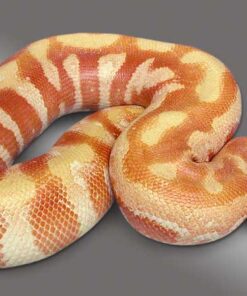


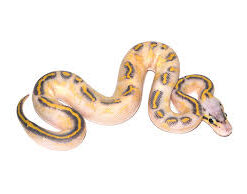
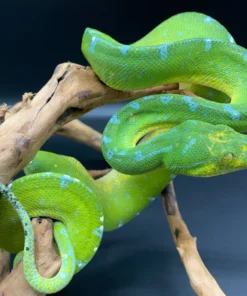

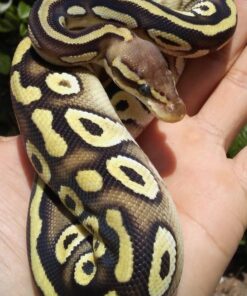
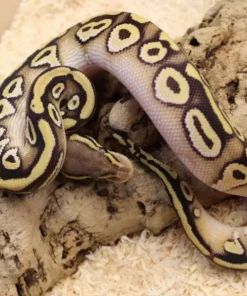
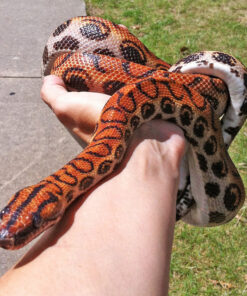
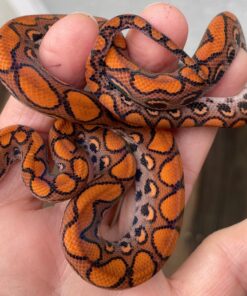
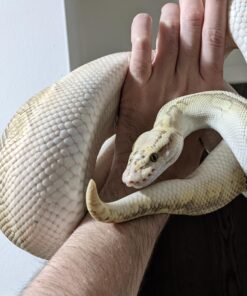

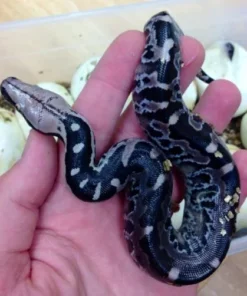

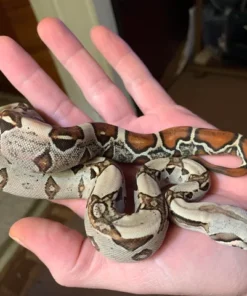
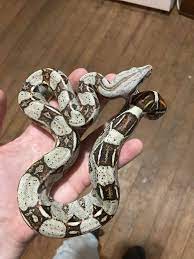

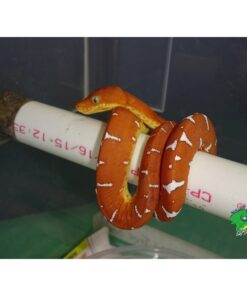
Reviews
There are no reviews yet.